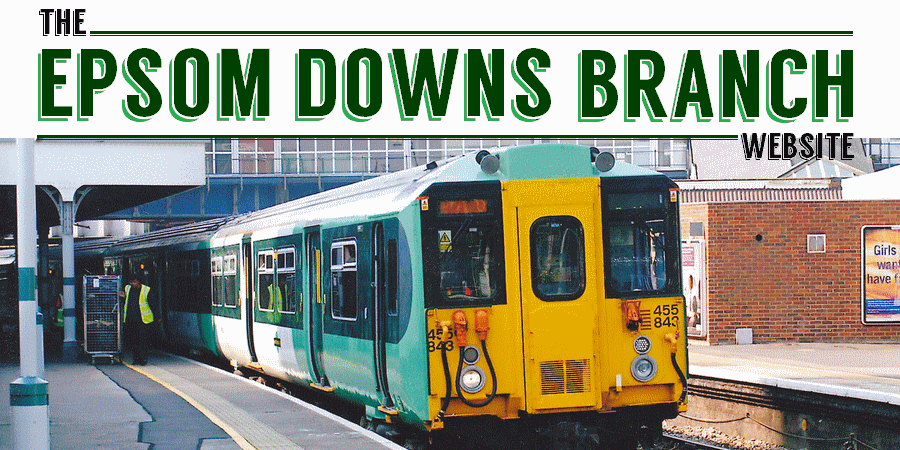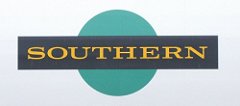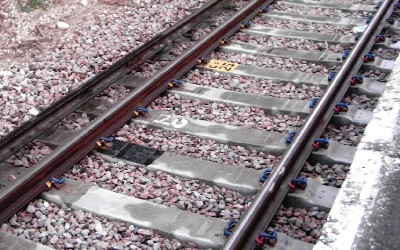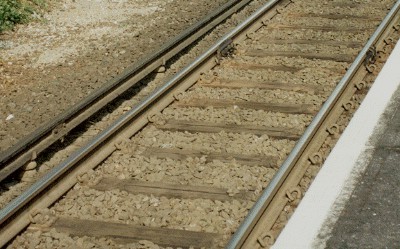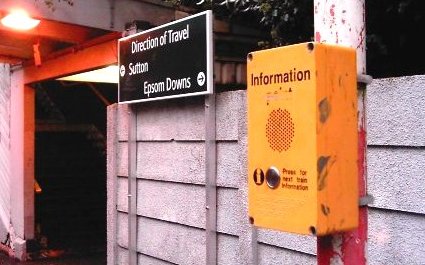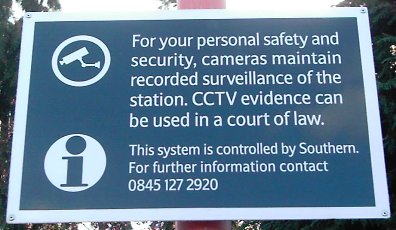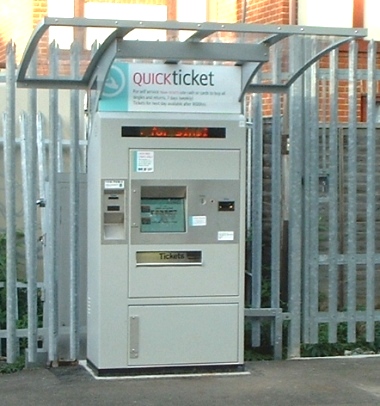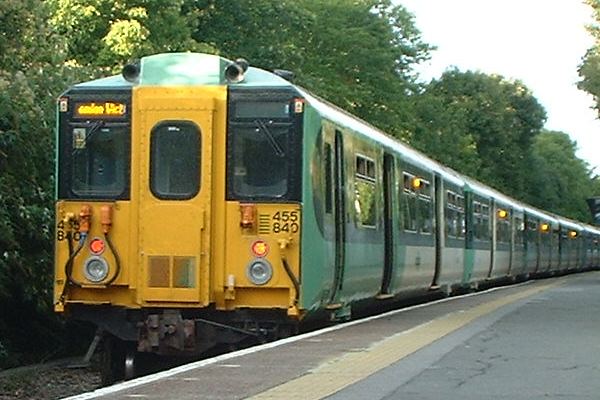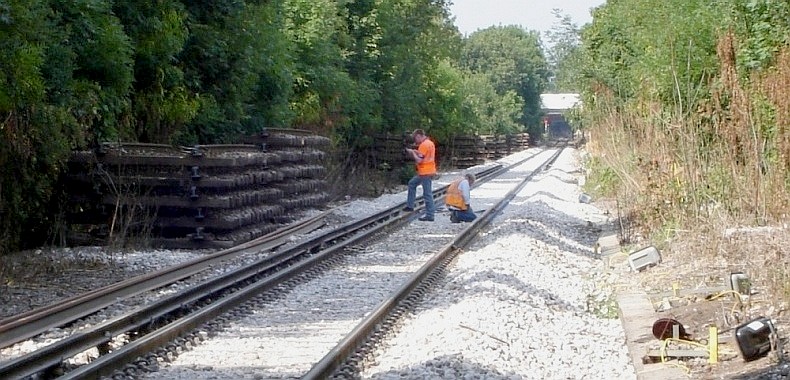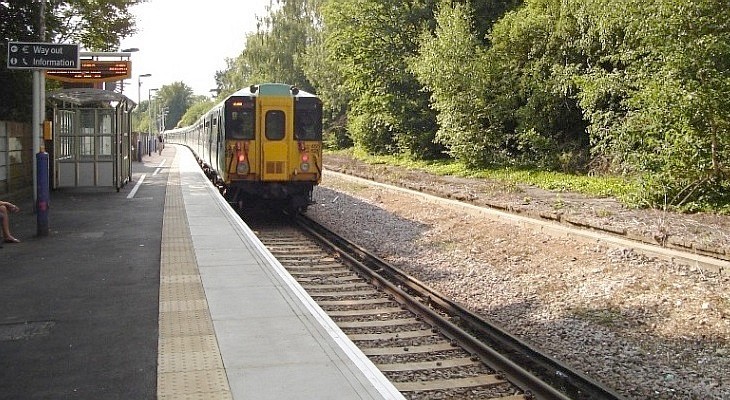|
|||||
SOUTHERN |
|||||
| On May 30th 2004, just over a year after signing its seven-year franchise, South Central was rebranded as the Southern, the trading name for what initially was the New Southern Railway Ltd before becoming the Southern Railway Ltd. The branding cost the company around £250,000 and according to official statements deliberately harked back at the "old" Southern Railway. One of the "big four" private railway companies before nationalisation in 1947, the SR had in its days enjoyed a firmly established reputation for first class service, delivery of performance and investment (witness the SR's extensive thrid rail electrification programme). | |||||
| The Epsom Downs branch saw
words put into action virtually coinciding with the
launch of the new Southern, as extended
engineering work took place over the weekend of 8th
and 9th May 2004, during which the branch was
re-ballasted together with a complete track renewal at
Banstead and on part of the line crossing the Downs en
route to Belmont. This included longer and welded rails on concrete sleepers, replacing shorter segments of track on wooden sleepers. |
|||||
|
|||||
| This important infrastructure
rejuvenation was a commitment in favour of the branch
which it hadn't seen since Network SouthEast's decision
in the late 1980's to modernise the station layout at
Epsom Downs. This time around, however, all stations on
the line benefited as facilities for passengers were
further improved and added to. All stations had already been equipped with train information devices during Southern's operating period as South Central, but now even further passenger information was added. Since the days when the stations on the branch became unstaffed, passengers had often been left with no information at all as to when the next train was going to arrive or depart - this was especially true, of course, in the event of delays. |
|||||
| Southern was also quick to
bring its corporate colours and design to the entire
branch, further emphasizing the general atmosphere of a
change for better. This was certainly also helped by the
opening of the new CCTV control centre at Streatham Hill
in March 2005 as part of a £ 3.1 million package of
measures in passenger safety and security funded by
Transport for London and Southern.
|
|||||
| Making rail travel safer and easier across the capital had become a growing issue since the 1970s and reached critical levels in the 1990s when it became increasingly clear that not only were the railways faced with an image problem, but they were actually losing passengers who could opt for other means of transport. | |||||
|
|||||
| Only a few months later, in July 2005, Southern provided another upgrade to customer services by installing and putting into service new ticket machines at Epsom Downs and Belmont, after Sutton had been one of the first stations to have QUICKticket machines in May 2005. | |||||
|
|||||
| Southern Cl 455s thus underwent
an extensive mid-life refurbishing at Eastleigh, where
the bodywork was treated to remove corrosion and new
vinyl covered floors fitted. The unpopular low backed
seats were replaced with high backed versions, retaining
the 2+2 and 3+2 seating arrangement, and a space for
wheelchairs, with all interior finishes replaced as well. For added security each car was equipped with four CCTV cameras and windows made of vandal resistant glass, along with fitting a passenger information system. |
|||||
|
|||||
| Parallel to refurbishment of the stock run on the branch, Southern continued to upgrade both track and stations in conjunction with Network Rail, the infrastructure owner. | |||||
|
|||||
| With platform upgrading and
installation of matrix-dot passenger information system
indicating the next three trains completed, Southern has
turned Banstead back into a fairly pleasing station again
- something it had not been for at least two decades. Travel statistics for the Epsom Downs branch reflect the efforts undertaken by Southern since taking on the franchise in 2004 as the annual entries and exits recorded by National Rail show a marked increase in travels to and from the stations on the branch within five years. |
|||||
|
|||||
| Whilst the growth in passengers at Banstead (where patronage was traditionally high) compares favourably to other lines, the figures rocketed for Epsom Downs and simply crashed through the roof for Belmont. The trend continues, as the figures for 2010/11 show a total of 139,754 passengers for Belmont, and improved facilities and services at Sutton have resulted in a rise from 4,7 million passengers in 2004 to 6,6 million in 2008. | |||||
| In June 2008 Southern also
assumed responsibility for Gatwick Express services and
in December 2008 took over services between Redhill and
Tonbridge from competitor Southeastern, making them a
strong contestant for the franchise renewal put forward
for tender by the Department for Transport in August
2008. Four bidders were shortlisted (Southern,
NedRailways Ltd, National Express, and Stagecoach), and
on June 9th 2009 the DfT announced that Govia
retained the franchise and would operate the service
until 2015. In December 2011, the Department for Transportation announced that the Southern franchise would be absorbed into the next Thameslink franchise, which Govia won on May 23rd 2014. At the conclusion of the Southern franchise in July 2015, the South Central franchise was thus merged into the Govia Thameslink Railway (GTR) franchise (run as a management contract rather than a traditional franchise), with the Southern brand being retained. Organised as the Thameslink, Southern & Great Northern passenger franchise (TSGN), it covers regional and commuter services into London in an area stretching from King's Lynn, Cambridge, Peterborough and Bedford to Southampton, Brighton and Ashford. TSGN is a "super franchise" - the UK's largest in terms of passenger numbers, trains, revenue and staff. Following the tribulations of passenger railways during Covid-19 - one of many upheavals GTR had to face previously, including strikes in 2016, low customer ratings over several years, and losing the Southeastern network in 2021 due to a failure to declare £25 million of historic taxpayer funding that GTR should've paid back. Troubles continued in 2022 over the potential renewal of the franchise, something rail passenger interest groups threatened legal action against, but ultimately GTR was awarded the new National Rail Contract (NRC), which started on April 1st 2022 and will run for at least three years, with up to a further three years at the Secretary of State’s discretion. |
|||||
COPYRIGHT
NOTICE |
|||||
Page last revised: 17 September 2022 |
|||||
